Demystifying the PPG wave 2.2 & 2.3
Thanks to MiK for his knowledge and his FLUKE PM3394B 200 MHz Combiscope.PPG wave 2.2 = 8 bit and wave 2.3 = 12 bit?
The PPG wave 2.2 with the original wave 2.2 analog boards (named "OF 4"") have AD558 DACs per voice. These are 8 bit DACs. The PPG wave 2.3 uses the analog boards named "OF 4 12 bit" with the 12 bit AD7545 DACs per voice. The wavetables are not stored in a higher resolution (bit depth) on the PPG wave 2.3. So the wavetable sounds are played back by using the upper 8 bit of the 12 bit DACs. So the playback is still 8 bit for wavetables. Therefor the digital part is PPG wave 2.2 alike.
The full 12 bits are only used to playback samples imported via the PPG waveterm B or the PPG PRK-FD keyboard (PPG PRK with built in 5 1/4" disk drive). The waveterm A sends sample data to the PPG wave 2.2 in just 8 bit depth.
There might be differences on the code for the envelopes and different VCF calibration when comparing the PPG wave 2.2 against the later wave 2.3.
PPG waves 2.2 & 2.3 oscillators of one voice are never mixed!
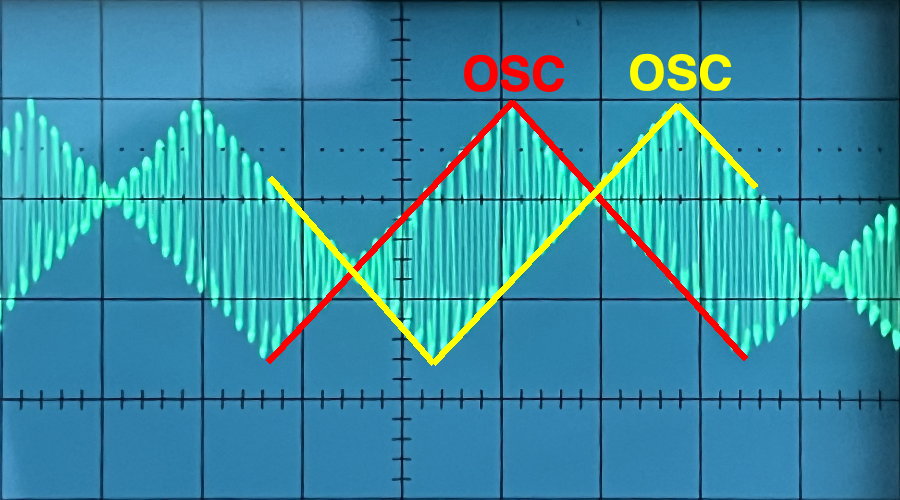
| 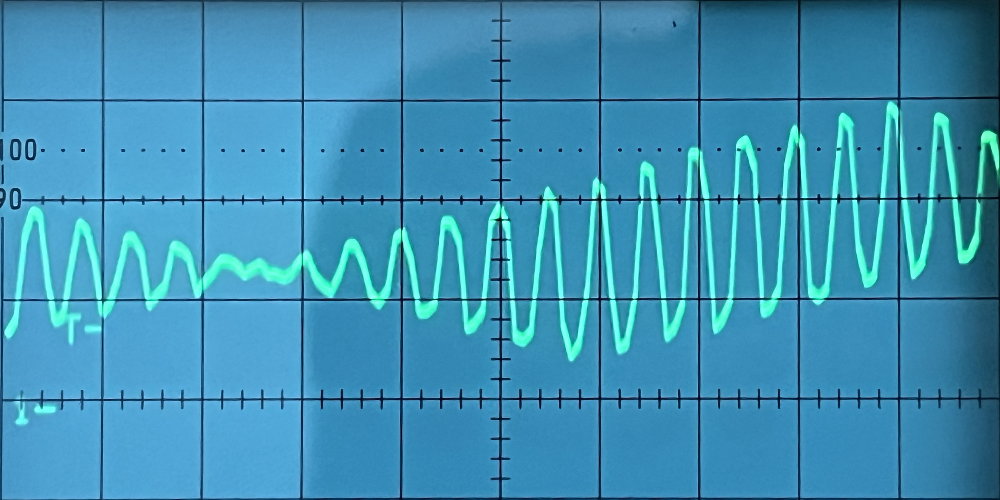
|
| Two OSCs playing triangle wave with only a little detune | same as left, but zoomed |
| Notice the rapid switching from one to another oscillator sample word | |
Yes, the main and the so called sub oscillator of a PPG wave 2.2/3 voice are never mixed or added! The digital data of each oscillator of a voice is sent to the DAC one after another in an interleaved way. So there is one sample word of OSC 1 and then one of the OSC 2. And every oscillators got a sample rate of about 183.8 kHz (= 25 MHz quartz ÷8 ÷17 ticks of PAL cycle). But the DAC gets data twice that often (one value for OSC 1 and then one value for OSC 2) at about 367.6 kHz. And due to the nature of our ear and the very, very high sample rate (CD = 44.1 kHz vs. PPG 367.6 kHz), we hear the two oscillators like being mixed and not interlaced. We kind of hear just the smoothed integral of the DAC output. But we get plenty of high pitched aliasing beyond our hearing range using this strange method.
The individual eight voices are mixed to the output in the analog domain.
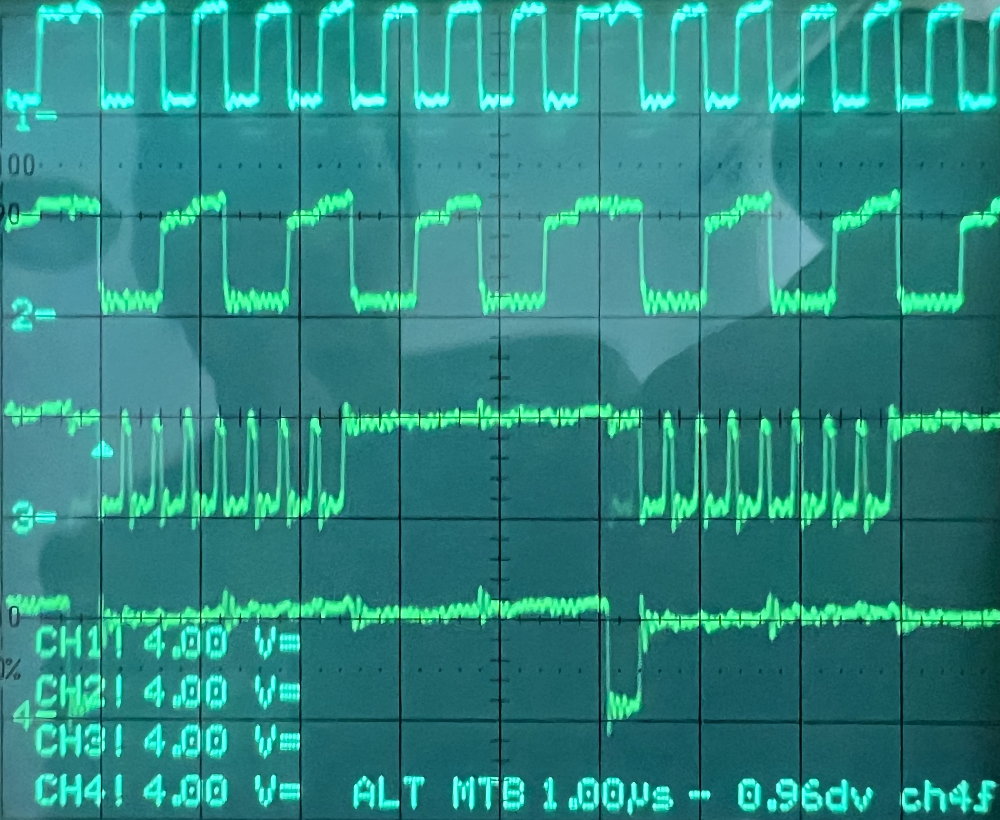
| 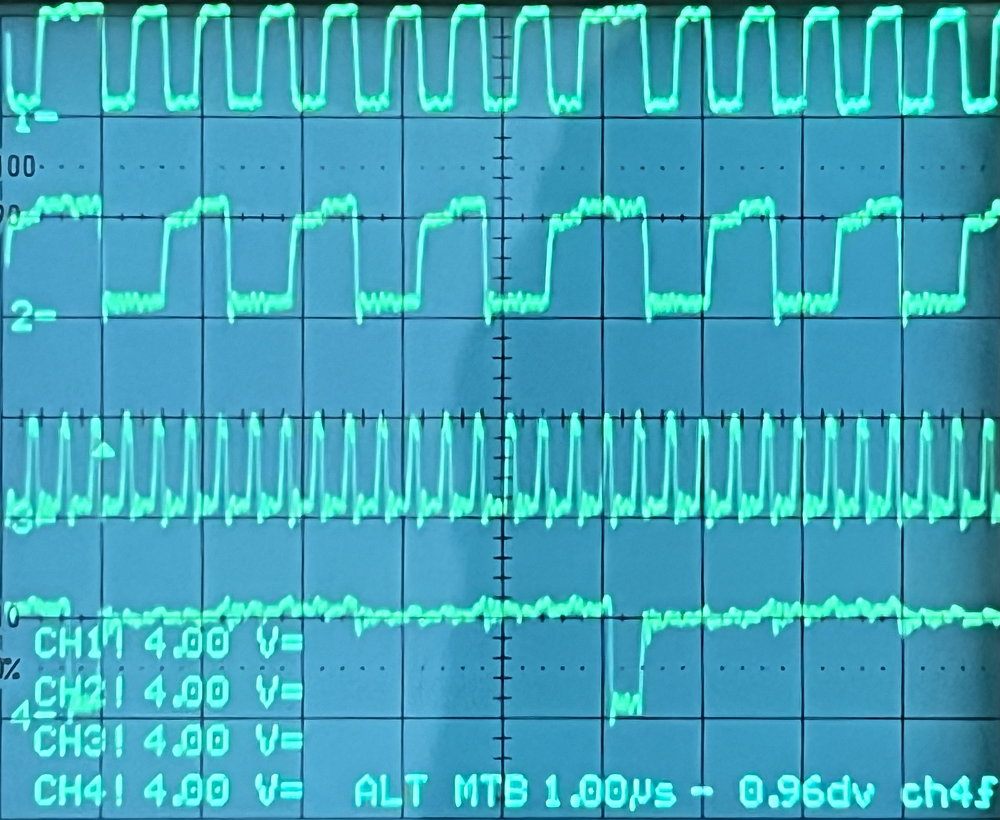
|
| OSC 2 for all 8 voices set to off (SW:3 in Digital page) | OSC 2 for all 8 voices set to on (SW:0 in Digital page) |
| Notice the double width pulse in the upper channel of the scope | |
| Some signals from the PAL 20x10 (Programmable Array Logic) of the Proz-Board (top to bottom): • voice select A (bit 0) • voice select B (bit 1) • DAC enable (one pulse for each oscillator of all voices) • global DAC enable (active for 16 ticks during the whole update cycle, pause of one tick) | |
| Voice select C left away due to only 4 scope channels available, it's the bit 2 of the binary counting sequence seen for A and B already. Goes low-high-low-high, so one full update is for OSC1 of all 8 voices, followed by OSC2 of all voices, followed by the pause of one tick. | |
Due to a slight pause between the switching of the PAL between selecting OSC 2 to OSC 1, the second oscillator sample word is hold 1/8th longer as the sample word of the first oscillator. The PAL 20x10 triggers the 8 first oscillators of a voice (8 "ticks"), then the the 8 second oscillators (another 8 "ticks") and then "stops" for one "tick". So there are 17 "clicks" together in one cycle of updating the audio of all eight voices. This cycle is repeated 183.8 kHz, hence the sample rate per oscillator (and twice per DAC). The values for the second oscillators are hold at the DAC output for one "tick" longer as the main oscillators value. What this does cause mathematically to the output in our hearing range is beyond my knowledge.
The measurements were taken on a PPG wave 2.3 running in the wave 2.2 mode.
PPG waves 2.3 voice update rate
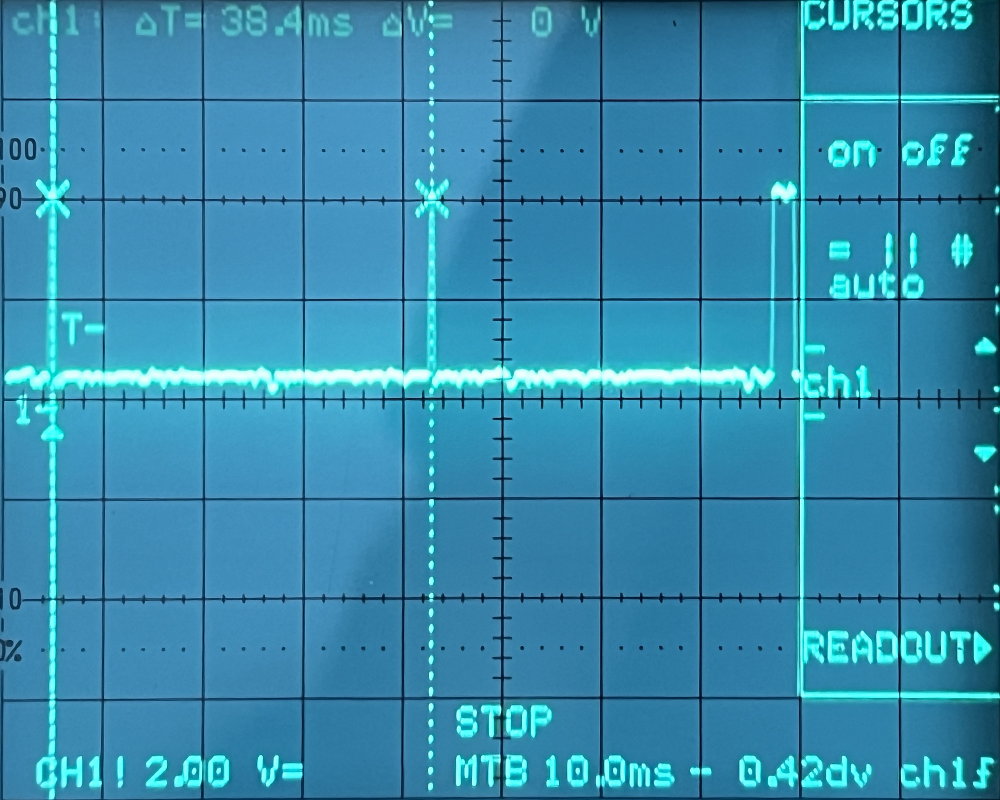
The multiplexer for the CVs of the VCF, VCF resonance and VCA are updated every 38,4 ms (about 26 Hz). This is rather lame compared to todays synths. But never less, the PPG does not sound bad. It got character!
Disclamer
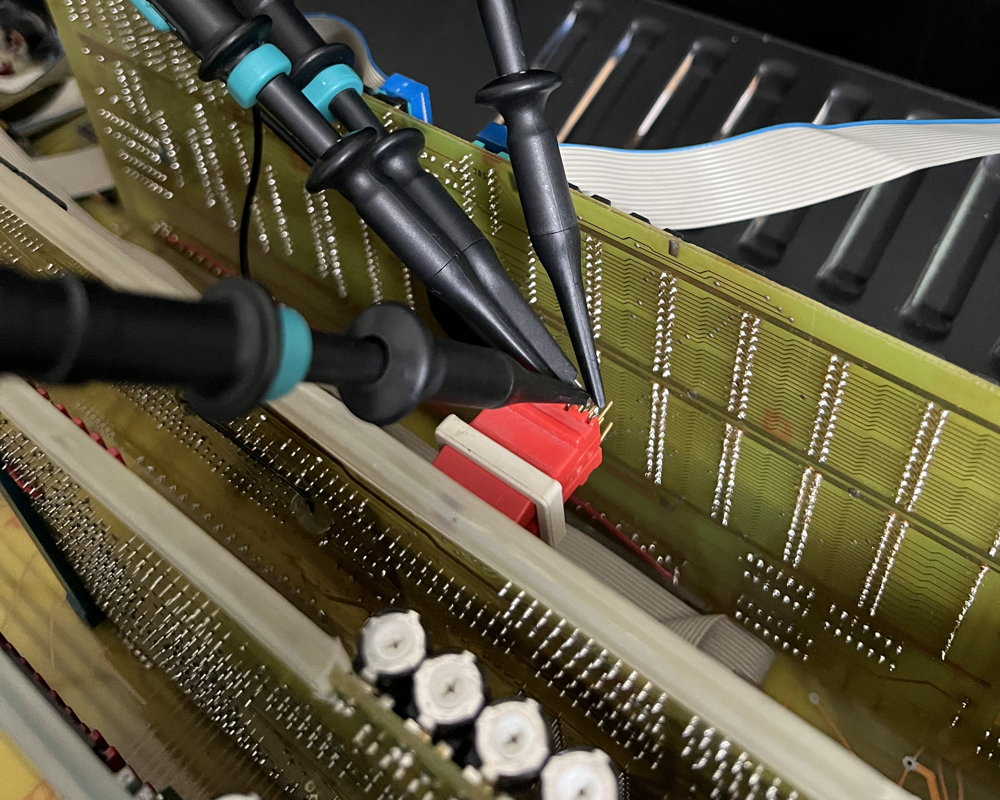
No PPG wave was harmed during these measurements. No shortcut was produced. No pin bent. I asure the reader, this PPG wave 2.3 was alive and playing well before and after. And only CO2 free generated power was used.
Don't try this at home, unless you know what you are doing!
Link for additional informations
• www.tauntek.com/PPGWav23.htm by R. Grieb• www.virtual-music.at/en/ppg-zone/#4 by Virtual Music e.U. – Vintage Synthesizer Service in Vienna